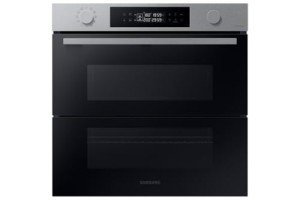The Comprehensive Guide to Built-In Ovens
Intro
Built-in ovens are a staple in contemporary cooking areas, integrating elegance with functionality. They offer a streamlined visual and efficient cooking capabilities, making them a favored choice for house owners and culinary enthusiasts alike. This post delves into the benefits of built-in ovens, their various types, essential features to consider, installation tips, and maintenance recommendations, together with regularly asked concerns.
Advantages of Built-In Ovens
Built-in ovens included a selection of advantages that add to their popularity. Here are some essential benefits:
- Space-Saving Design: Built-in ovens are created to fit flawlessly into cabinets, permitting a more orderly and space-efficient kitchen design.
- Visual Appeal: They supply a sleek and modern-day look that can enhance the total style of the kitchen.
- Improved Functionality: Built-in ovens typically feature innovative functions and technologies that support numerous cooking techniques.
- Improved Cooking Experience: Many built-in designs include self-cleaning functions, temperature level probes, and programmable settings, improving the cooking experience.
- Increased Property Value: A properly designed kitchen with built-in appliances can boost the worth of a home.
Types of Built-In Ovens
Built-in ovens come in several types, each created to satisfy different cooking choices and requirements. Here are the main types:
| Type of Built-In Oven | Description |
|---|---|
| Single Oven | A single, standalone oven for standard baking and roasting. |
| Double Oven | Integrates 2 ovens in one system, permitting numerous dishes to cook at different temperatures. |
| Wall Oven | Installed in the wall, freeing up counter space, suitable for little kitchen areas. |
| Stove | Utilizes fans to distribute hot air for even cooking, enhancing the results of baked products. |
| Steam Oven | Utilizes steam for much healthier cooking options, protecting nutrients in food. |
Secret Features to Consider
When choosing a built-in oven, several functions can impact performance and functionality. Here are some essential functions to keep in mind:
Cooking Modes
- Bake: Traditional baking with bottom heat.
- Broil: Top heat cooking ideal for browning and crisping.
- Convection: Circulates hot air for even cooking.
- Steam: Uses steam for much healthier cooking choices.
Size and Capacity
- Requirement sizes typically range from 24 to 30 inches large.
- Think about the internal capability-- it can range from 3 to 6 cubic feet, allowing for different dish sizes.
Controls and Smart Features
- Touchscreen Controls: Easy programs and adjustments.
- Smart Technology: Connectivity features enable remote monitoring and control via mobile phone applications.
Energy Efficiency
- Look for designs with ENERGY STAR ratings, suggesting lower energy usage.
Safety Features
- Features like vehicle shut-off and kid locks enhance safety during operation.
Setup Tips
Installing a built-in oven may require expert support, but here are some basic suggestions to bear in mind:
- Choose the Right Location: Ensure there's enough area in your cabinetry for setup, remembering ventilation requirements.
- Electrical Requirements: Check that your kitchen's wiring satisfies the oven's power requirements, especially for electric designs.
- Level the Oven: Ensure the oven is level to promote even cooking.
- Secure the Oven: Attach it firmly to the kitchen cabinetry to prevent movement throughout use.
Maintenance Advice
Regular upkeep is crucial for the durability and performance of a built-in oven. Here's how to keep it in top shape:
- Regular Cleaning: Wipe down surface areas after each usage and carry out deep cleaning regularly.
- Inspect Seals: Inspect door seals for wear and guarantee they maintain an airtight fit to improve energy effectiveness.
- Adjust Temperature: If food regularly comes out overcooked or undercooked, think about recalibrating the oven's temperature settings.
- Professional Servicing: Schedule annual check-ups with an experienced technician to preserve optimal performance.
Frequently asked questions
What is the difference between a built-in oven and a freestanding oven?
Built-in ovens are designed to be set up within cabinetry, providing a seamless appearance. On the other hand, freestanding ovens are standalone units that generally include their own cooktop.
Are built-in ovens more costly than freestanding models?
Generally, built-in ovens can be more costly due to the added setup expenses and advanced functions. Nevertheless, costs vary commonly based on brand name, size, and functionalities.
Can I set up a built-in oven myself?
While it is possible to install a built-in oven yourself, it is advised to hire a professional to make sure correct setup, especially if adjustments to cabinetry or electrical work are needed.
How often should I clean my built-in oven?
It is a good idea to clean your built-in oven routinely after heavy use. For electric oven gas hob built in , utilize the self-cleaning function if available or occasionally carry out manual cleaning to prevent accumulation.
Built-in ovens are an important addition to any kitchen, using both aesthetic appeal and advanced cooking abilities. By understanding their types, features, setup, and upkeep requirements, house owners can make educated options that enhance their cooking experience and boost the total value of their homes. As kitchen designs continue to progress, built-in ovens will likely stay a popular choice for modern-day homes.

